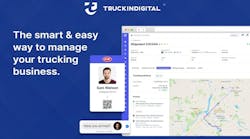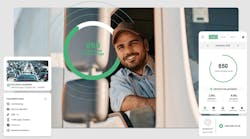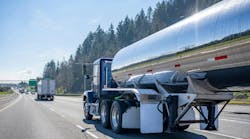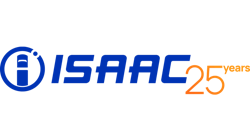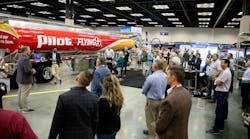Calgary, Canada-based TRIG announced that their XLOAD digital sensor is the first to be certified by the Association of American Railroads (AAR) to measure and track hazardous commodities inside of moving tankcars.
Furthermore, TRIG operates the only digital manufacturing facility of its kind in North America to be certified to the M-1002 and M-1003 standards by the AAR to build this type of sensor technology for use with hazardous commodities inside of moving tankcars.
“The M1002 and M1003 is a quality assurance program that has been developed by the AAR to aid in compliance to the rail industry safety and reliability standards that are set out by the Federal Railroad Administration in the United States and Transport Canada”, said Kent Duncan, TRIG quality assurance manager.
The sensor’s patented measurement and monitoring technology and wireless data communications helps produce a ‘safer and smarter tankcar. As an example, it is used by shippers to automatically detect, measure, and report on the specific level and volume of crude oil that is loaded into and unloaded out of a closed and sealed tankcar. This replaces the industry standard, inaccurate, inefficient, and risky measurement method that requires an operator to open a tank car and manually inspect the levels and volumes of the toxic commodity inside of the tankcar.
This poor visibility of the commodity levels inside of tankcars causes the industry to chronically under fill cars by an average of 5%. This is done to avoid the danger of overfilling the tank cars. Shippers can now safely increase those fill levels by leveraging the accuracy of the sensor’s measurements inside of a closed tank car. And, properly filling tank cars eliminates the danger of under filled and unbalanced rail tankcars. Unbalanced rail tankcars have a greater risk of derailment.
TRIG has begun pilot trials with four refineries and shippers located in Canada and the United States. “Two of our primary pilot trial objectives are to determine, consistently and with accuracy, the additional volume of oil that can be loaded into our customers’ tankcars, and to prove that our smart tankcars are the safest in the industry.” said Rob Tasker, TRIG chief executive officer. “The increased volume that we can safely load into our customer’s cars will reduce their transportation cost of every barrel of oil they transport to their North American customers”.
Also, the sensor’s modern GPS technology pinpoints the real time location of where the tankcar and its hazardous commodity ‘is’. This is a significant safety advantage over the current industries’ older and slower method that only reports on where a rail car ‘was’ in the previous 24 hours. Shippers benefit by being automatically alerted to the location of their hazardous commodities when close to sensitive areas like cities. And, the sensor automatically alerts them to hazardous commodity leaks and thefts, and other issues.
